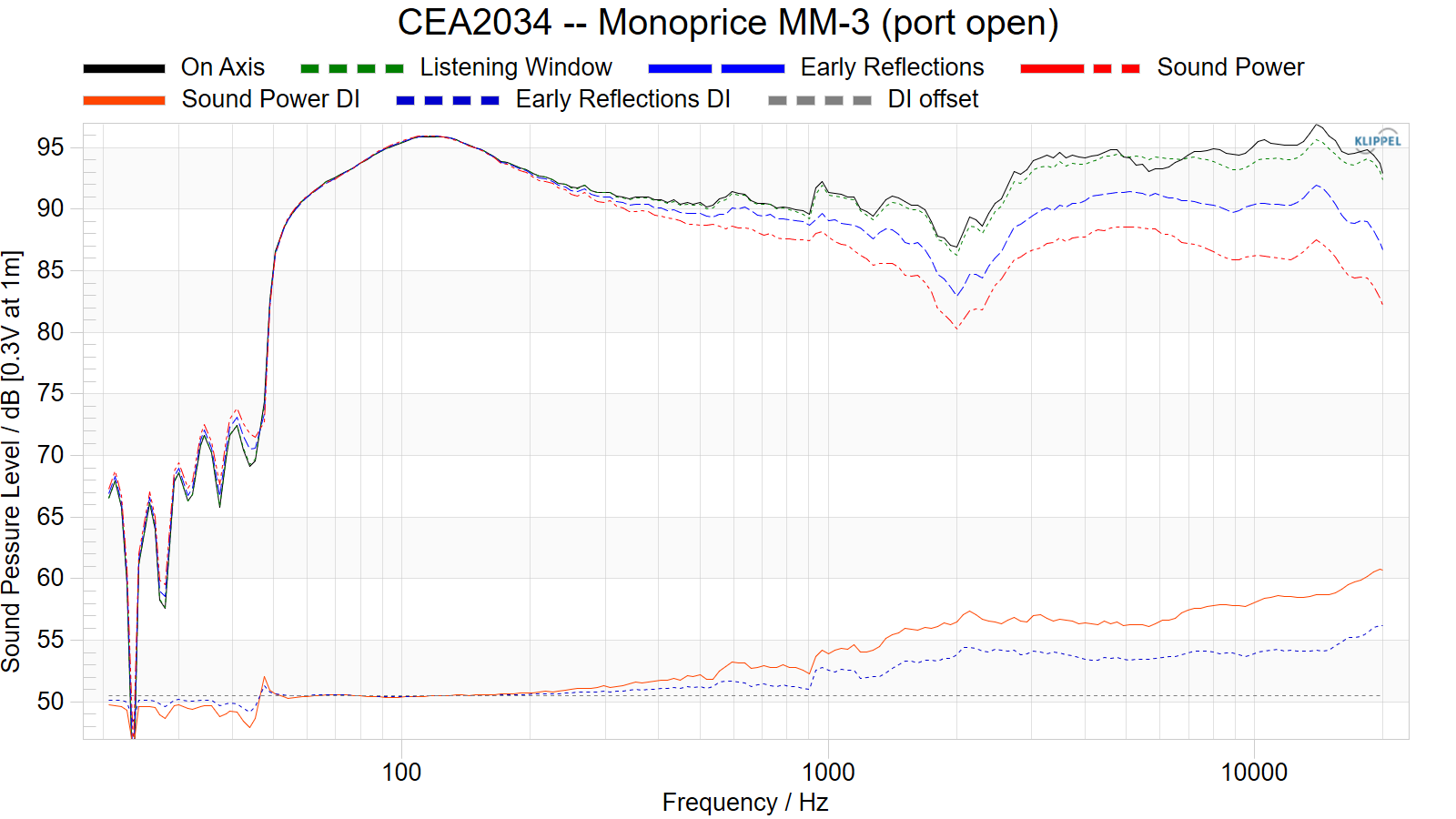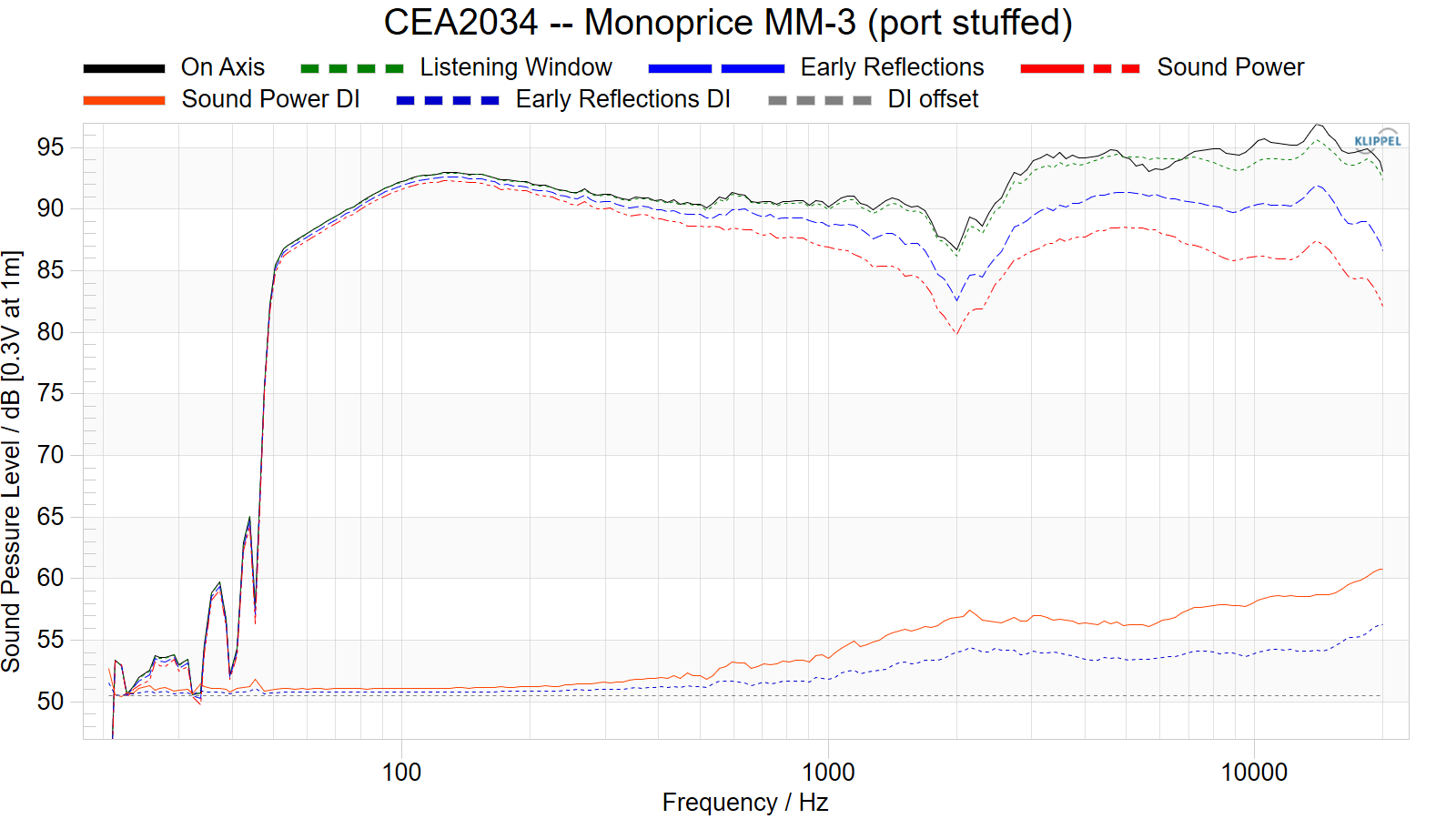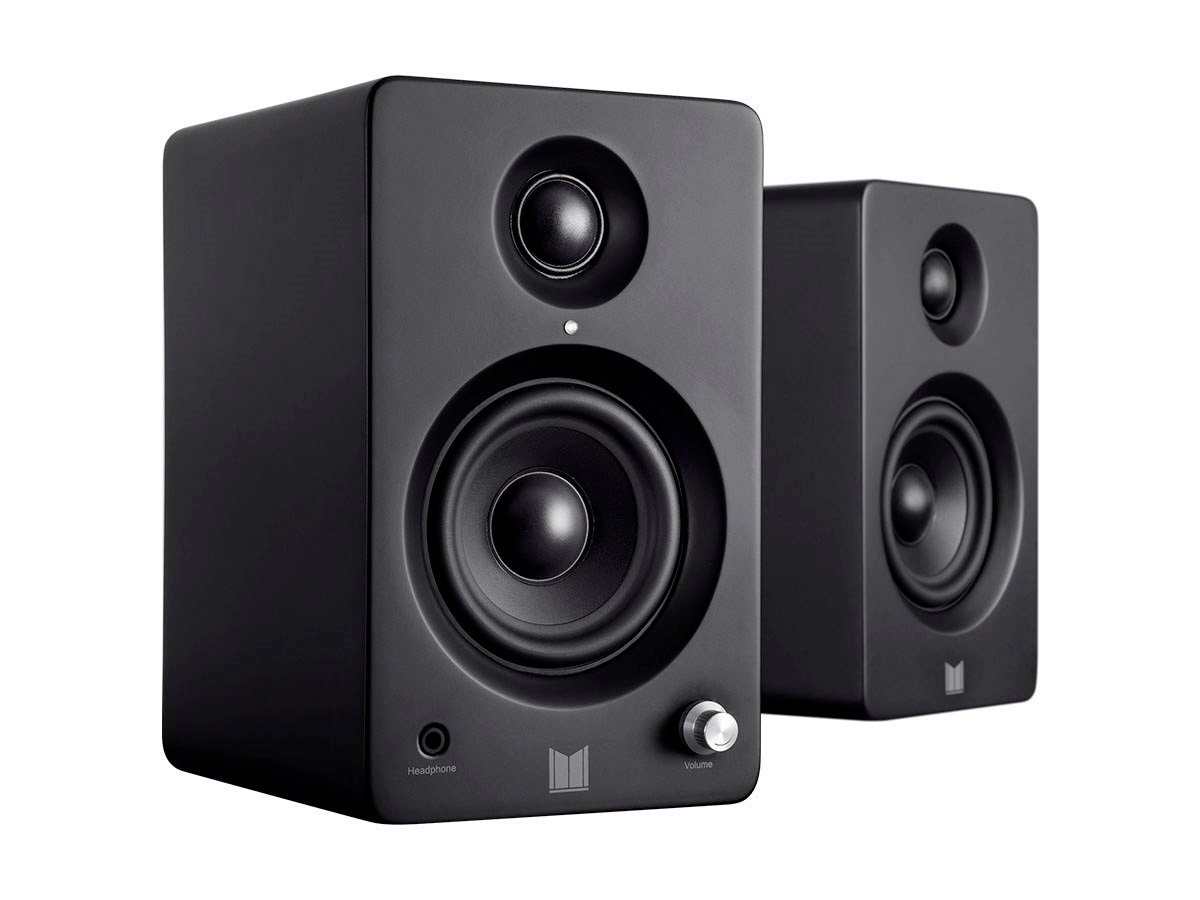Foreword / YouTube Video Review
The review on this website is a brief overview and summary of the objective performance of this speaker. Due to time constraints and lack of personal interest, this review is a shortened version of what I typically provide. However, note that I initially tested this speaker with the port open. I then decided to test with the port sealed and - given the vast improvement in performance - decided to provide the rest of the data/review with the speaker’s ports blocked. I used foam to stuff the ports.
For a primer on what the data means, please watch my series of videos where I provide in-depth discussion and examples of how to read the graphics presented hereon.
Information and Photos
Detailed information for Monoprice MM-3 can be found on the manufacturer’s website. A copy/paste of their description is provided below:
The Monolith™ MM-3 Speakers deliver audiophile performance for your desktop! Compact but mighty, these speakers feature exceptional sonic clarity, punchy bass, and present a spacious musical soundstage. Connect easily with RCA and 3.5mm wired inputs or pair your device wirelessly using the Bluetooth® radio with Qualcomm® aptX™ Audio. A headphone jack adorns the front, allowing you to easily switch between the speakers and headphones. The Monolith MM-3 powered speakers are a perfect, great sounding addition to a home office or bedroom.
CTA-2034 (SPINORAMA) and Accompanying Data
All data collected using Klippel’s Near-Field Scanner. The Near-Field-Scanner 3D (NFS) offers a fully automated acoustic measurement of direct sound radiated from the source under test. The radiated sound is determined in any desired distance and angle in the 3D space outside the scanning surface. Directivity, sound power, SPL response and many more key figures are obtained for any kind of loudspeaker and audio system in near field applications (e.g. studio monitors, mobile devices) as well as far field applications (e.g. professional audio systems). Utilizing a minimum of measurement points, a comprehensive data set is generated containing the loudspeaker’s high resolution, free field sound radiation in the near and far field. For a detailed explanation of how the NFS works and the science behind it, please watch the below discussion with designer Christian Bellmann:
The reference plane in this test is the tweeter. A single RCA input was used and the volume was set to about 3/4 max. I initially tested this speaker with the port open. I then decided to test with the port sealed and - given the vast improvement in performance - decided to provide the rest of the data/review with the speaker’s ports blocked. I used foam to stuff the ports.
Measurements are provided in a format in accordance with the Standard Method of Measurement for In-Home Loudspeakers (ANSI/CTA-2034-A R-2020). For more information, please see this link.
CTA-2034 / SPINORAMA:
The On-axis Frequency Response (0°) is the universal starting point and in many situations, it is a fair representation of the first sound to arrive at a listener’s ears.
The Listening Window is a spatial average of the nine amplitude responses in the ±10º vertical and ±30º horizontal angular range. This encompasses those listeners who sit within a typical home theater audience, as well as those who disregard the normal rules when listening alone.
The Early Reflections curve is an estimate of all single-bounce, first-reflections, in a typical listening room.
Sound Power represents all the sounds arriving at the listening position after any number of reflections from any direction. It is the weighted rms average of all 70 measurements, with individual measurements weighted according to the portion of the spherical surface that they represent.
Sound Power Directivity Index (SPDI): In this standard the SPDI is defined as the difference between the listening window curve and the sound power curve.
Early Reflections Directivity Index (EPDI): is defined as the difference between the listening window curve and the early reflections curve. In small rooms, early reflections figure prominently in what is measured and heard in the room so this curve may provide insights into potential sound quality.

I stuffed the port and re-measured. I stuck with this configuration for the rest of the test.

Early Reflections Breakout:
Floor bounce: average of 20º, 30º, 40º down
Ceiling bounce: average of 40º, 50º, 60º up
Front wall bounce: average of 0º, ± 10º, ± 20º, ± 30º horizontal
Side wall bounces: average of ± 40º, ± 50º, ± 60º, ± 70º, ± 80º horizontal
Rear wall bounces: average of 180º, ± 90º horizontal

Estimated In-Room Response:
In theory, with complete 360-degree anechoic data on a loudspeaker and sufficient acoustical and geometrical data on the listening room and its layout it would be possible to estimate with good precision what would be measured by an omnidirectional microphone located in the listening area of that room. By making some simplifying assumptions about the listening space, the data set described above permits a usefully accurate preview of how a given loudspeaker might perform in a typical domestic listening room. Obviously, there are no guarantees because individual rooms can be acoustically aberrant. Sometimes rooms are excessively reflective (“live”) as happens in certain hot, humid climates, with certain styles of interior décor and in under-furnished rooms. Sometimes rooms are excessively “dead” as in other styles of décor and in some custom home theaters where acoustical treatment has been used excessively. This form of post processing is offered only as an estimate of what might happen in a domestic living space with carpet on the floor and a “normal” amount of seating, drapes, and cabinetry.
For these limited circumstances it has been found that a usefully accurate Predicted In-Room (PIR) amplitude response, also known as a “room curve” is obtained by a weighted average consisting of 12 % listening window, 44 % early reflections and 44 % sound power. At very high frequencies errors can creep in because of excessive absorption, microphone directivity, and room geometry. These discrepancies are not considered to be of great importance.

Horizontal Frequency Response (0° to ±90°):

Vertical Frequency Response (0° to ±40°):

Harmonic Distortion
Harmonic Distortion at 86dB @ 1m:

Harmonic Distortion at 96dB @ 1m:

Parting / Random Thoughts
Much better performance than the Monoprice DT-3. Still, it’s pretty bad. Even with the port stuffed. My advice is to stuff the port which will resolve the peaky nature on the LF and help tame the mid-frequency resonances. Turn the speaker to about 10 or 20 degrees off-axis and put the speaker below ear level to help make the high-frequency more neutral. Most likely, this is how this speaker will be used anyway given it is a desktop speaker.
Support the Cause!
If you like what you see here and want to help support the cause you might be interested in joining my Patreon, here. You can also contribute via PayPal (the big yellow button below).
Your support helps me pay for new items to test, hardware, miscellaneous items and costs of the site’s server space and bandwidth. All of which I otherwise pay out of pocket. So, if you can help chip in a few bucks, know that it is very much appreciated.
Alternatively, if you are interested in buying this speaker while helping me earn a small commission, please consider using my affiliate link.
You can also join my Facebook and YouTube pages if you would like to follow along with updates.
